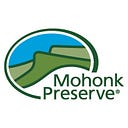Species Spotlight: Red Maple
What would fall foliage season be like without the Red maple? This tree is a major part of the landscape on the Shawangunk Ridge (and the entire northeastern United States) and, as its name suggests, provides a brightly colored leaf display.
Looks like: Red maple trees have smooth gray bark when young but form small, uneven plates and exfoliate (or shed) when mature. The leaves generally have five deep lobes.
Grows in: Shady and sunny areas of moist deciduous and mixed forests.
Niche: Deer feed on twigs and foliage, chipmunks and white-footed mice feed on seeds, and yellow-bellied sapsuckers on sap. Mammals such as beaver, porcupine, cottontail rabbit, and squirrel dine on seeds, flowers, bark, and twigs. Young trees are a favorite nesting site for prairie warblers.
Frequency: Common
Reproduction: Male flowers (red) and female flowers (orange) grow on separate trees and appear before the leaves do. Trees produce double-winged fruit called “samaras.”
Fun facts: Red maple can thrive in soil with a wider range of minerals, textures, moisture, pH, and elevation than any other forest species in North America.
Red maple is adaptable to diverse natural conditions, which helps it survive even in forests where other trees are declining. On the Ridge in recent years, over-browsing by deer on oak saplings has made it difficult for that species to regenerate — but because red maples are tolerant of shade and other factors, they are better able to withstand this threat and keep on growing and spreading.
